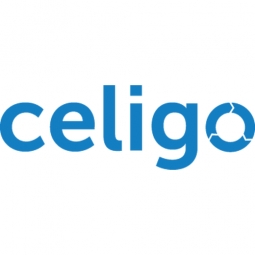下载PDF
BrandMuscle Automates and Scales Business with Celigo
技术
- 基础设施即服务 (IaaS) - 云数据库
- 网络与连接 - NFC
适用行业
- 水泥
- 金融与保险
适用功能
- 采购
- 销售与市场营销
服务
- 云规划/设计/实施服务
- 系统集成
挑战
BrandMuscle 是一家领先的综合本地营销公司,其业务建立在 MAS 500 和旧的媒体购买本地解决方案的基础上。到 2018 年,随着每年数亿美元的收入,该公司决定对其传统后端进行现代化改造,并重新考虑其整个运营,以实现客户媒体购买流程的自动化并扩大规模。该公司在全球会计和技术咨询公司 Sikich 的帮助下过渡到基于云的应用程序。 Sikich 对 BrandMuscle 的运营进行了全面的业务流程评估,并确定了一个常见流程,该流程需要手动重新输入相同的信息多达 12 次,从而导致昂贵且耗时的错误。首要任务是实施 NetSuite 作为新的基于云的 ERP 系统,并淘汰公司的 MAS 500 系统和旧媒体购买软件。该团队需要为新版本的 Netsuite 提供一种方法,包括用于媒体购买的自定义代码,以复杂的方式与 BrandBuilder 和其他应用程序连接和交互。
关于客户
BrandMuscle 是整合本地和渠道营销的领导者,为 300 多个世界顶级品牌提供服务。 BrandMuscle 集成本地营销平台 Brandbuilder 使品牌及其本地营销合作伙伴能够为每个客户提供最大的营销影响,以获取和留住最佳客户、建立忠诚度、提高终身客户价值并最大化投资回报率。该公司的运营基于 MAS 500 和旧的媒体购买本地解决方案。到 2018 年,随着每年数亿美元的收入,该公司决定对其传统后端进行现代化改造,并重新考虑其整个运营,以实现客户媒体购买流程的自动化并扩大规模。
解决方案
Sikich 和 BrandMuscle 选择 Celigo 作为连接和自动化公司运营中的自定义流程所需的 iPaaS。新系统允许在 NetSuite 内部创建媒体请求,自动推送到 BrandBuilder,然后将机会推送回 NetSuite。该机会作为销售订单并生成发票以在 BrandBuilder 中推迟付款。然后付款本身会被推送到 NetSuite 中。除了五个订单到现金集成之外,BrandMuscle 还使用 Celigo 填充其数据集市,以便客户能够进行分析。 Salesforce Marketing Cloud 与 Snowflake、Azure、SQL 和 FTP 进行了许多集成,以便为客户显示信息。该团队目前正在致力于与 JIRA、Stripe、Chargebee 以及供应商 API 集成,以便能够发送 PO 和接收发票。
运营影响
数量效益
相关案例.

Case Study
System 800xA at Indian Cement Plants
Chettinad Cement recognized that further efficiencies could be achieved in its cement manufacturing process. It looked to investing in comprehensive operational and control technologies to manage and derive productivity and energy efficiency gains from the assets on Line 2, their second plant in India.

Case Study
Real-time In-vehicle Monitoring
The telematic solution provides this vital premium-adjusting information. The solution also helps detect and deter vehicle or trailer theft – as soon as a theft occurs, monitoring personnel can alert the appropriate authorities, providing an exact location.“With more and more insurance companies and major fleet operators interested in monitoring driver behaviour on the grounds of road safety, efficient logistics and costs, the market for this type of device and associated e-business services is growing rapidly within Italy and the rest of Europe,” says Franco.“The insurance companies are especially interested in the pay-per-use and pay-as-you-drive applications while other organisations employ the technology for road user charging.”“One million vehicles in Italy currently carry such devices and forecasts indicate that the European market will increase tenfold by 2014.However, for our technology to work effectively, we needed a highly reliable wireless data network to carry the information between the vehicles and monitoring stations.”

Case Study
Safety First with Folksam
The competitiveness of the car insurance market is driving UBI growth as a means for insurance companies to differentiate their customer propositions as well as improving operational efficiency. An insurance model - usage-based insurance ("UBI") - offers possibilities for insurers to do more efficient market segmentation and accurate risk assessment and pricing. Insurers require an IoT solution for the purpose of data collection and performance analysis

Case Study
Smooth Transition to Energy Savings
The building was equipped with four end-of-life Trane water cooled chillers, located in the basement. Johnson Controls installed four York water cooled centrifugal chillers with unit mounted variable speed drives and a total installed cooling capacity of 6,8 MW. Each chiller has a capacity of 1,6 MW (variable to 1.9MW depending upon condenser water temperatures). Johnson Controls needed to design the equipment in such way that it would fit the dimensional constraints of the existing plant area and plant access route but also the specific performance requirements of the client. Morgan Stanley required the chiller plant to match the building load profile, turn down to match the low load requirement when needed and provide an improvement in the Energy Efficiency Ratio across the entire operating range. Other requirements were a reduction in the chiller noise level to improve the working environment in the plant room and a wide operating envelope coupled with intelligent controls to allow possible variation in both flow rate and temperature. The latter was needed to leverage increased capacity from a reduced number of machines during the different installation phases and allow future enhancement to a variable primary flow system.

Case Study
Automated Pallet Labeling Solution for SPR Packaging
SPR Packaging, an American supplier of packaging solutions, was in search of an automated pallet labeling solution that could meet their immediate and future needs. They aimed to equip their lines with automatic printer applicators, but also required a solution that could interface with their accounting software. The challenge was to find a system that could read a 2D code on pallets at the stretch wrapper, track the pallet, and flag any pallets with unread barcodes for inspection. The pallets could be single or double stacked, and the system needed to be able to differentiate between the two. SPR Packaging sought a system integrator with extensive experience in advanced printing and tracking solutions to provide a complete traceability system.






